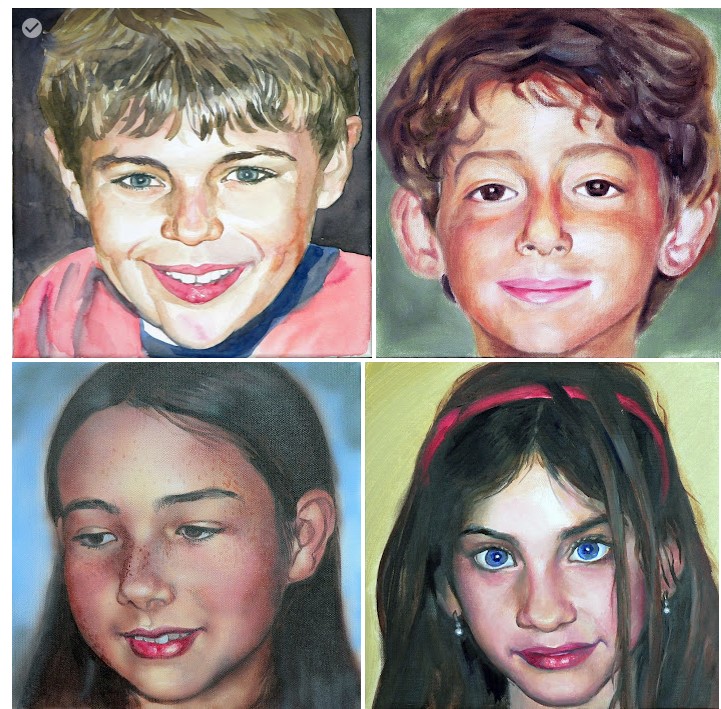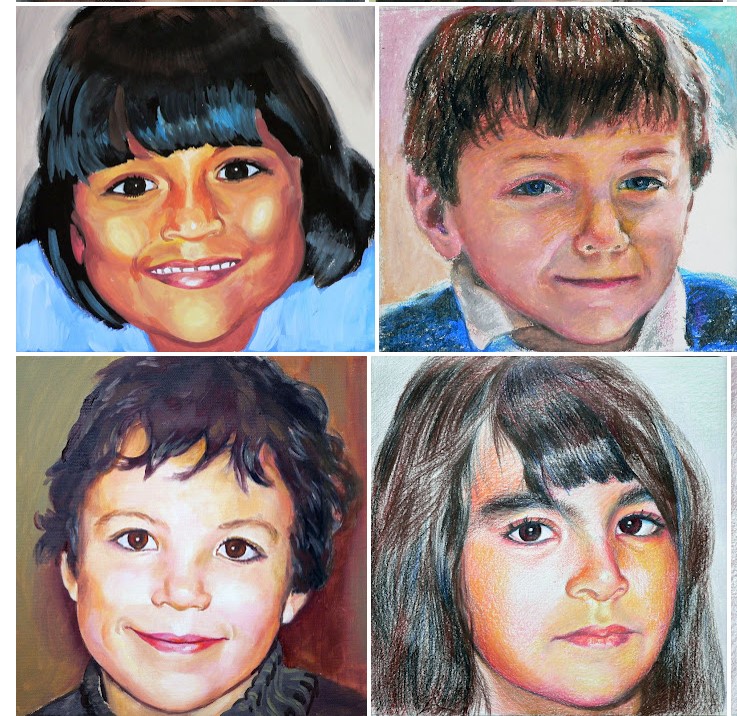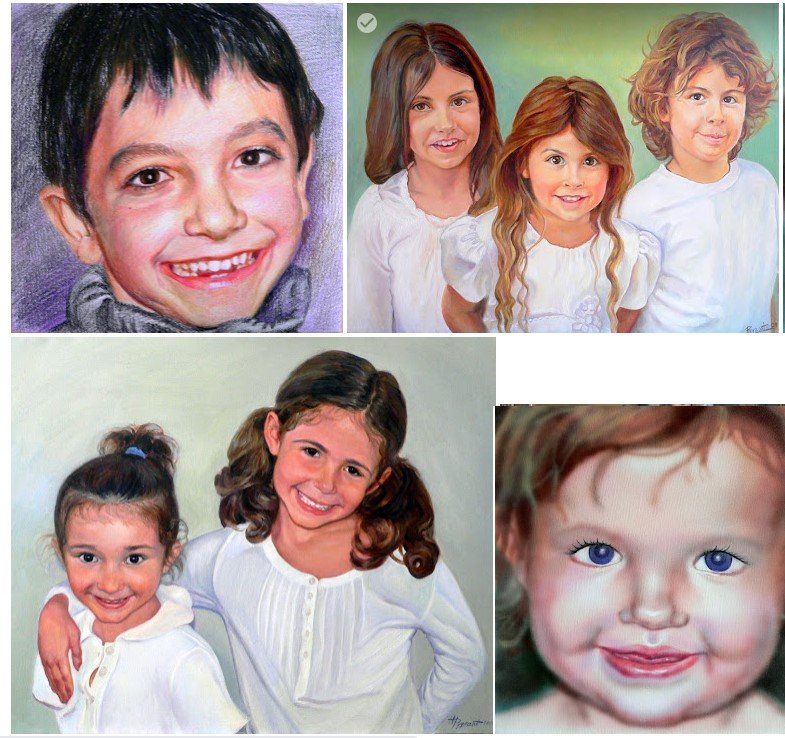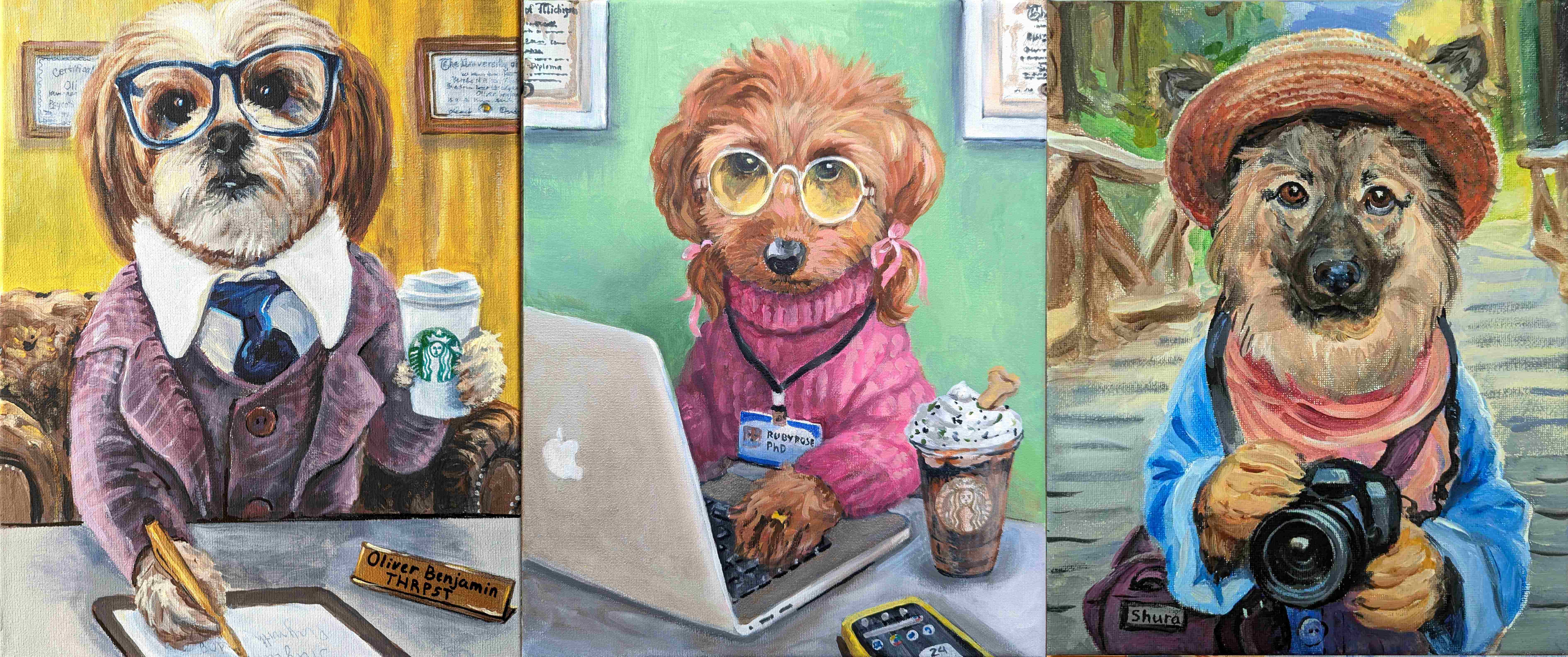Transforming Broken Jewelry into Art: A Creative Upcycling Project
Art has the power to transform the ordinary into the extraordinary, and this project exemplifies that by turning broken jewelry into a stunning piece of art. The provided photos showcase a creative use of discarded jewelry to form part of a painting, demonstrating the beauty of upcycling.
Materials Needed:
- Broken jewelry pieces (chains, beads, pendants, etc.)
- Canvas or sturdy paper
- Acrylic paints
- Strong adhesive (like E6000)
- Brushes
Steps to Create Your Artwork:
-
Conceptualize Your Design: Begin by sketching your design on the canvas. Think about how the jewelry pieces can enhance your artwork. In the provided example, the jewelry forms the hair of a painted profile, adding texture and shine.
-
Prepare the Canvas: Paint the background and any parts of the design that won’t be covered by jewelry. Allow it to dry completely.
-
Arrange the Jewelry: Lay out the jewelry pieces on the canvas to see how they fit into your design. Experiment with different arrangements until you’re satisfied with the composition.
-
Adhere the Jewelry: Using a strong adhesive, carefully glue each piece of jewelry onto the canvas. Press firmly and allow the glue to dry thoroughly.
-
Add Finishing Touches: Once the jewelry is securely attached, add any final details with paint. This could include highlights, shadows, or additional elements to tie the piece together.
Benefits of Upcycling in Art:
- Environmental Impact: Upcycling reduces waste by repurposing materials that would otherwise be discarded.
- Unique Creations: Each piece of upcycled art is one-of-a-kind, reflecting the individuality of the materials used.
- Cost-Effective: Using found or broken items can be a cost-effective way to create beautiful art.
This project not only results in a visually striking piece but also promotes sustainability and creativity. By giving new life to broken jewelry, you can create art that is both meaningful and environmentally friendly.
Have you tried incorporating unconventional materials into your artwork before?
Come and do it with me in my art classes for kids and adults at Rush In Art Academy in Ann Arbor.

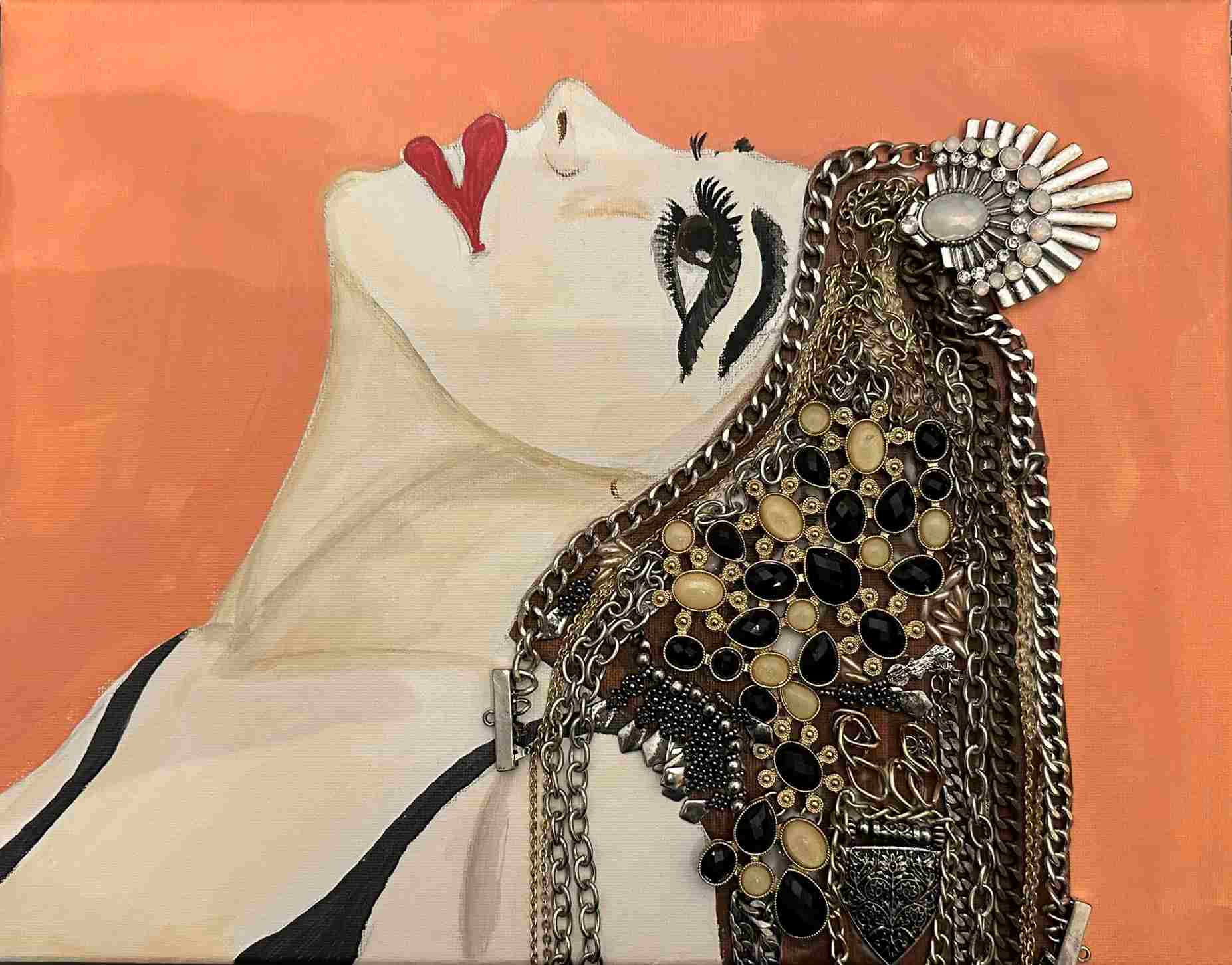
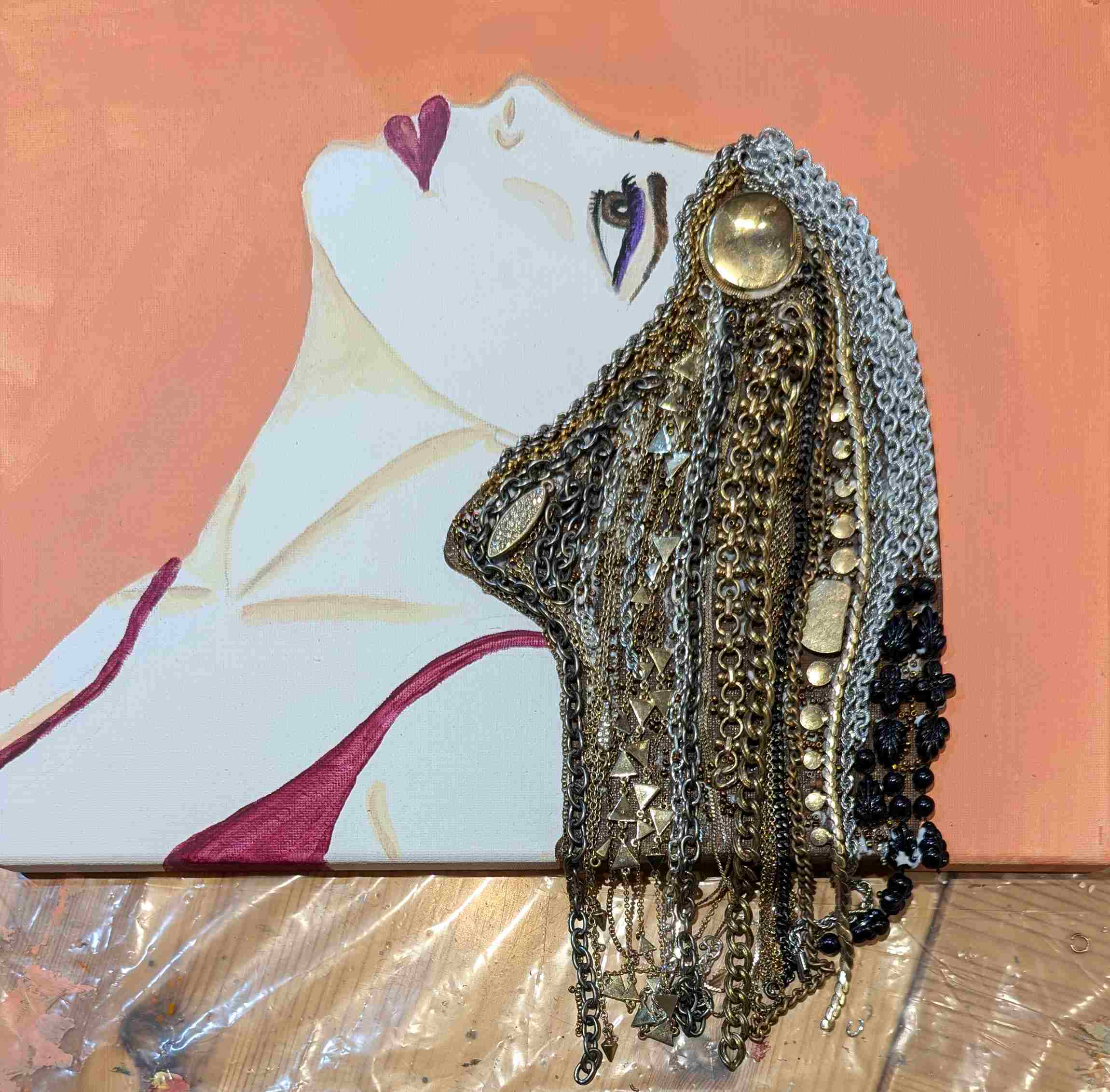



Entertaining Art vs. High Art: Bridging the Divide
Art has always been a reflection of human experience, capturing emotions, ideas, and moments in time. However, the art world often distinguishes between two broad categories: entertaining art and high art. This distinction, while sometimes controversial, helps us understand the diverse purposes and impacts of artistic expression.
Entertaining Art: The Joy of Accessibility
Entertaining art, often referred to as “low art,” is designed to be accessible and enjoyable to a wide audience. It includes forms like comic books, popular music, television shows, and movies. The primary goal of entertaining art is to provide pleasure, amusement, and a temporary escape from reality1.
Characteristics of Entertaining Art:
- Accessibility: Easily understood and appreciated by a broad audience.
- Commercial Appeal: Often created with the intent to attract large audiences and generate revenue.
- Immediate Gratification: Provides instant enjoyment and emotional response.
- Cultural Reflection: Mirrors contemporary trends, societal norms, and popular culture.
Despite its sometimes-dismissed status, entertaining art plays a crucial role in society. It brings people together, sparks joy, and can even address important social issues in a relatable way. For example, animated films often tackle themes of friendship, bravery, and acceptance, resonating with both children and adults.
High Art: The Pursuit of Intellectual and Aesthetic Excellence
High art, or “fine art,” is often seen as an intellectual pursuit that requires a deeper level of engagement and appreciation. This category includes classical music, fine literature, ballet, and visual arts like painting and sculpture. High art is typically associated with skill, creativity, and originality1.
Characteristics of High Art:
- Complexity: Often requires a higher level of understanding and interpretation.
- Aesthetic Value: Emphasizes beauty, form, and technique.
- Intellectual Engagement: Invites contemplation, analysis, and emotional depth.
- Cultural Legacy: Often preserved and celebrated for its historical and cultural significance.
High art challenges its audience to think critically and feel deeply. It can inspire profound emotional responses and provoke thought about the human condition. For instance, a painting by Vincent van Gogh or a symphony by Ludwig van Beethoven can evoke a wide range of emotions and interpretations, offering a timeless connection to the artist’s vision.
Bridging the Divide: The Value of Both
While the distinction between entertaining art and high art can sometimes create a divide, it’s important to recognize the value of both. Each serves a unique purpose and contributes to the richness of our cultural landscape.
Intersections and Overlaps:
- Blurring Boundaries: Some works of art defy categorization, blending elements of both entertaining and high art. For example, films like “The Godfather” or “Schindler’s List” are both commercially successful and critically acclaimed for their artistic merit.
- Mutual Influence: Entertaining art can inspire high art and vice versa. Popular culture often draws from classical themes, while fine art can incorporate contemporary elements.
- Personal Preference: Ultimately, the distinction between entertaining and high art is subjective. What one person finds intellectually stimulating, another might see as purely entertaining.
As an artist, I find myself navigating these categories in my own work. Whether I am creating custom pet portraits that bring joy to your clients or exploring more complex themes in my mixed media pieces, both entertaining and high art have a place in my creative journey.
By embracing the diversity of artistic expression, I can appreciate the full spectrum of human creativity and the myriad ways it enriches my life. At Rush In Art Academy I teach adult classes where we do mostly entertaining projects that take less time and skills but try to bring it to the level of high art and teach my students to appreciate and understand high art. The same is true with younger students who need entertainment by their nature but can use some small portions of aesthetic and high art and art history knowleвge.
What are your thoughts on the balance between entertaining and high art in your own work?
Benefits of Art for Physical Skills
The Importance of Art for Fine Motor Skills, Nerve Health, and Vision Sharpness
Art is not just a medium for creative expression; it also plays a crucial role in enhancing fine motor skills, nerve health, and vision sharpness. Engaging in artistic activities can provide numerous benefits, particularly for the development and maintenance of these essential physical abilities.
Fine Motor Skills
Fine motor skills involve the coordination of small muscles in the hands and fingers, which are essential for tasks such as writing, drawing, and manipulating small objects. Art activities like painting, sculpting, and drawing require precise hand movements, which help to improve dexterity and hand-eye coordination. For example, when children engage in finger painting, they develop their hand motor skills by manipulating paint with their fingers, enhancing their manual dexterity1. Similarly, adults can benefit from activities like detailed sketching or mosaic creation, which require steady hands and precise movements.
Nerve Health
The repetitive and detailed movements involved in creating art can stimulate nerve endings in the fingers, promoting better nerve health. This is particularly important for maintaining the sensitivity and functionality of the fingertips. Engaging in activities that require fine motor control, such as airbrushing or detailed painting, can help keep the nerves in the fingers active and healthy. This stimulation can be beneficial for individuals of all ages, helping to prevent conditions like neuropathy and maintaining overall nerve health.
Vision Sharpness
Artistic activities also contribute to the sharpness of vision. When creating art, individuals must focus on fine details, which can help improve visual acuity and hand-eye coordination. For instance, when working on a detailed pet portrait or a complex mosaic, artists must carefully observe and replicate intricate patterns and colors. This practice can enhance visual perception and the ability to distinguish fine details, which is crucial for both artistic endeavors and everyday tasks.
Practical Applications
At my art studio, Rush In Art Academy, I emphasize these benefits to my students. Offering classes that focus on detailed work, such as custom pet portraits or intricate mosaics, can help students develop their fine motor skills and improve their nerve health and vision sharpness. Encouraging students to engage in these activities regularly provides long-term benefits, enhancing their artistic abilities and overall physical health.
Incorporating these elements into my teaching approach makes art at Rush In Art Academy not only a creative outlet but also a valuable tool for physical development. Hope these highlights inspire my art students to appreciate the multifaceted benefits of engaging in artistic activities.
The Importance of Teaching Basic Drawing Skills to Every Child
In Rush In Art Academy we make an accent on basic drawing skills in all our art classes for kids and adults. You will ask why. It may be "boring" for my kids, for me. Here is why:
In today’s fast-paced world, where digital entertainment often takes precedence, the value of teaching basic drawing skills to children cannot be overstated. While entertaining art projects have their place, providing a foundation in drawing offers numerous benefits that extend beyond the canvas.
Building Fundamental Skills
Basic drawing skills are the building blocks of all visual arts. They teach children how to observe the world around them, understand proportions, and develop hand-eye coordination. These skills are essential for more advanced artistic endeavors and can be applied to various forms of art, from painting to sculpture.
Enhancing Cognitive Development
Drawing is not just about creating images; it’s a cognitive exercise that enhances critical thinking and problem-solving skills. When children learn to draw, they engage in a process that requires planning, spatial reasoning, and attention to detail. This cognitive engagement can improve their academic performance in subjects like math and science.
Encouraging Creativity and Expression
While entertaining art projects are fun, they often come with predefined outcomes. Teaching basic drawing skills, on the other hand, encourages children to explore their creativity and express themselves uniquely. It allows them to create original works of art, fostering a sense of accomplishment and boosting their self-esteem.
Developing Patience and Perseverance
Learning to draw requires practice and patience. Children learn that mastery doesn’t come overnight and that persistence is key to improvement. This lesson in perseverance is invaluable and can be applied to many areas of life, teaching children the importance of dedication and hard work.
Providing a Therapeutic Outlet
Art, including drawing, can be a therapeutic activity. It provides children with a healthy way to express their emotions and cope with stress. Basic drawing skills give them the tools to articulate their feelings visually, which can be particularly beneficial for those who find it challenging to express themselves verbally.
Preparing for Future Opportunities
For children who develop a passion for art, having a strong foundation in drawing can open doors to future opportunities. Whether they pursue a career in the arts or use their skills in other fields, the ability to draw can be a valuable asset. It can lead to careers in graphic design, architecture, animation, and more.
Conclusion
While entertaining art projects have their place in fostering a love for creativity, teaching basic drawing skills provides children with a solid foundation that benefits their overall development. It equips them with essential skills, enhances cognitive abilities, encourages creativity, and prepares them for future opportunities. By investing in basic drawing education, we give children the tools they need to succeed both in art and in life.
Same is true for adult art classes, too. Although the basic skills are not required for adults coming to art class at Rush In Art Academy mostly for fun, the skills will make their creative process more smooth and relaxed.
Change in consumer interests that happened for the last 20 years in fine art market.
Before, people were ordering the portraits of their kids; now, they order the portraits of their dogs or cats.
Here is what me and ai think about this trend.
The trend of childless households and the growing popularity of pet ownership likely intersect in shaping consumer interests in fine art. As more people opt for pet companionship over having children, their emotional bonds with their furry friends drive demand for personalized pet portraits. These artworks capture the unique personalities and cherished memories associated with beloved dogs and cats. 🐾🎨
Moreover, this shift reflects broader cultural changes, emphasizing the significance of pets in our lives. Whether it’s a whimsical cat portrait or a dignified dog painting, these artworks resonate with pet owners on a deep level. 🐶❤️ Traditionally, people commissioned portraits of their children. However, in recent years, there’s been a shift. Pet portraits—especially of dogs and cats—have gained popularity. Pet owners now seek personalized artworks capturing their beloved companions3.
Here are the collage of portraits I did 20 years ago and here are what I ended up doing now. No complaints, Rush In Art is a very flexible art studio where you can try all media and subjects you can or cannot imagine.
See you in my art classes and, Pet lovers, see you in my Etsy shop www.natapetportrait.etsy.com
